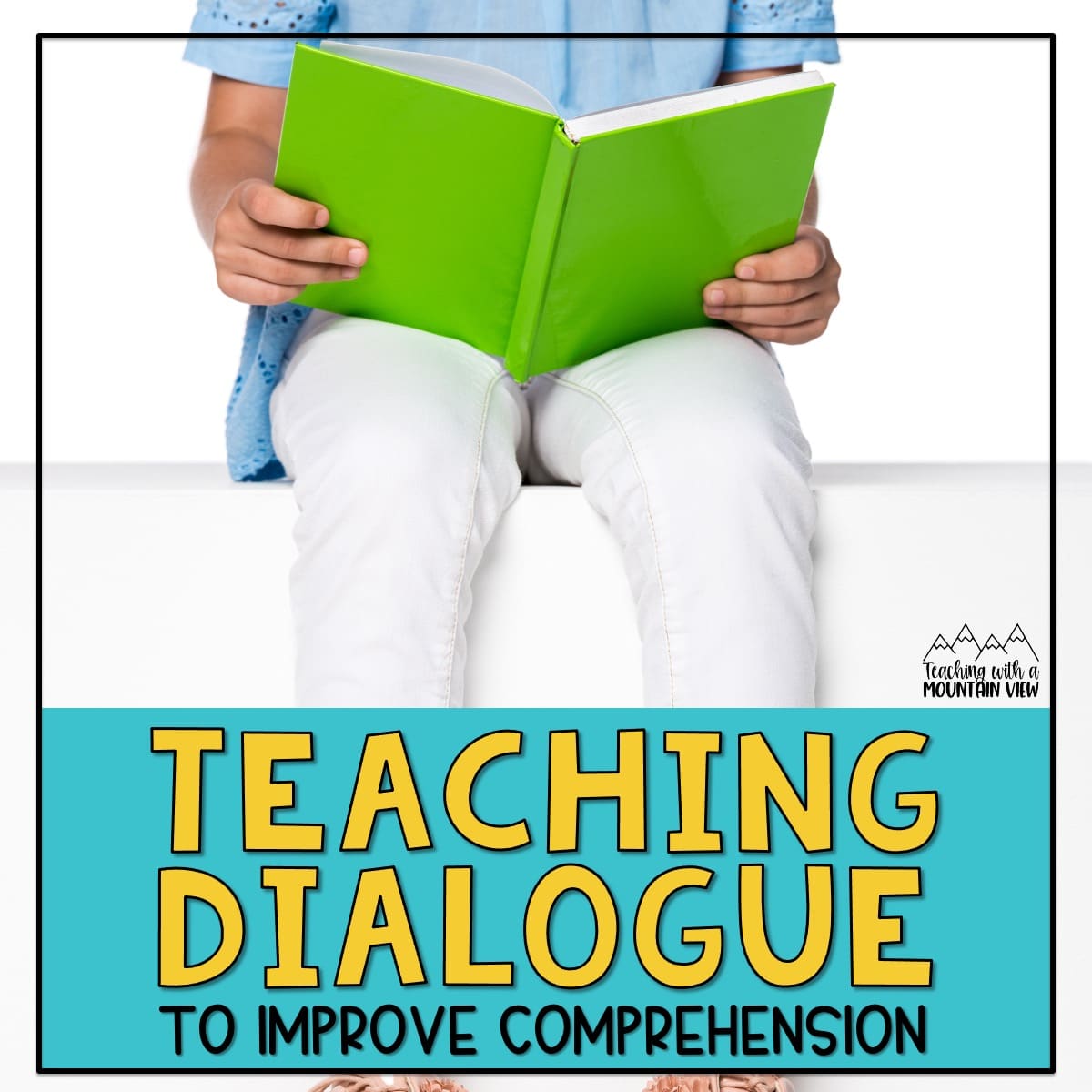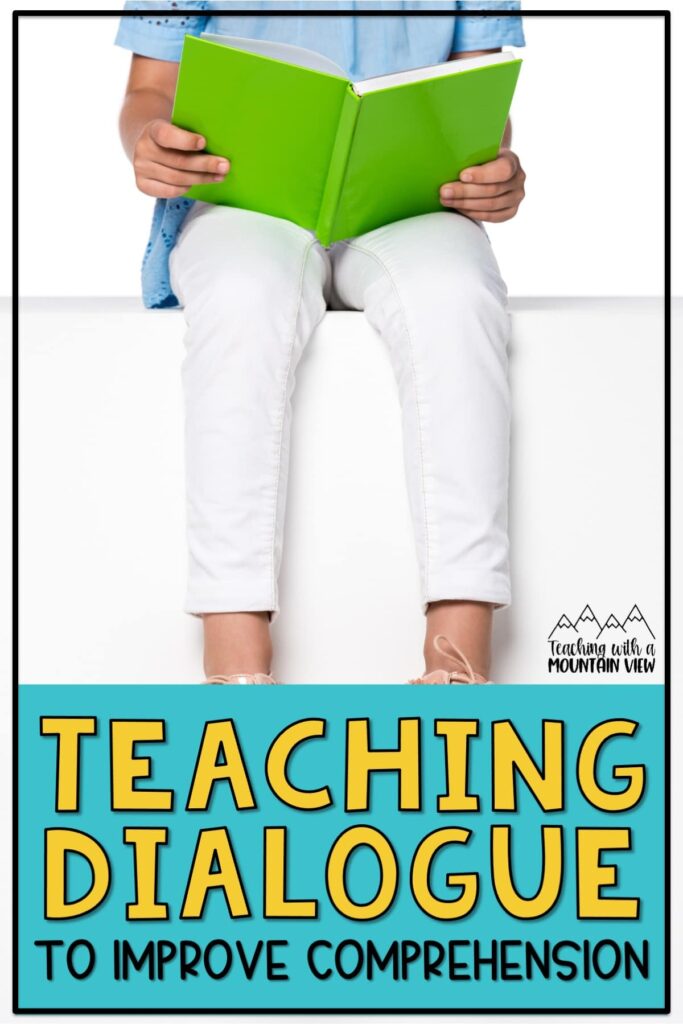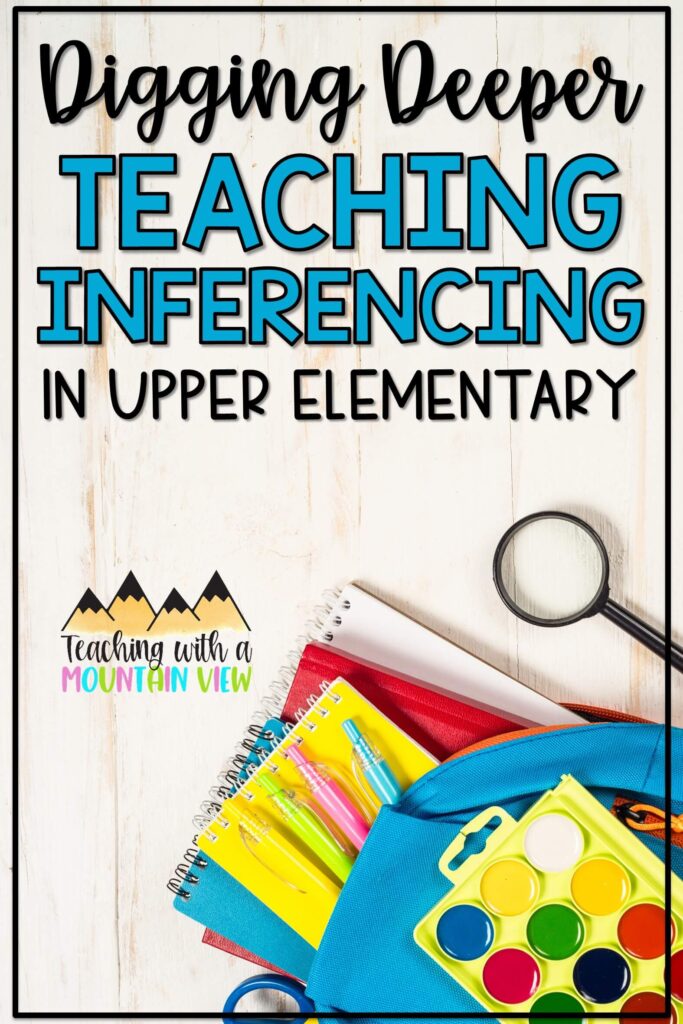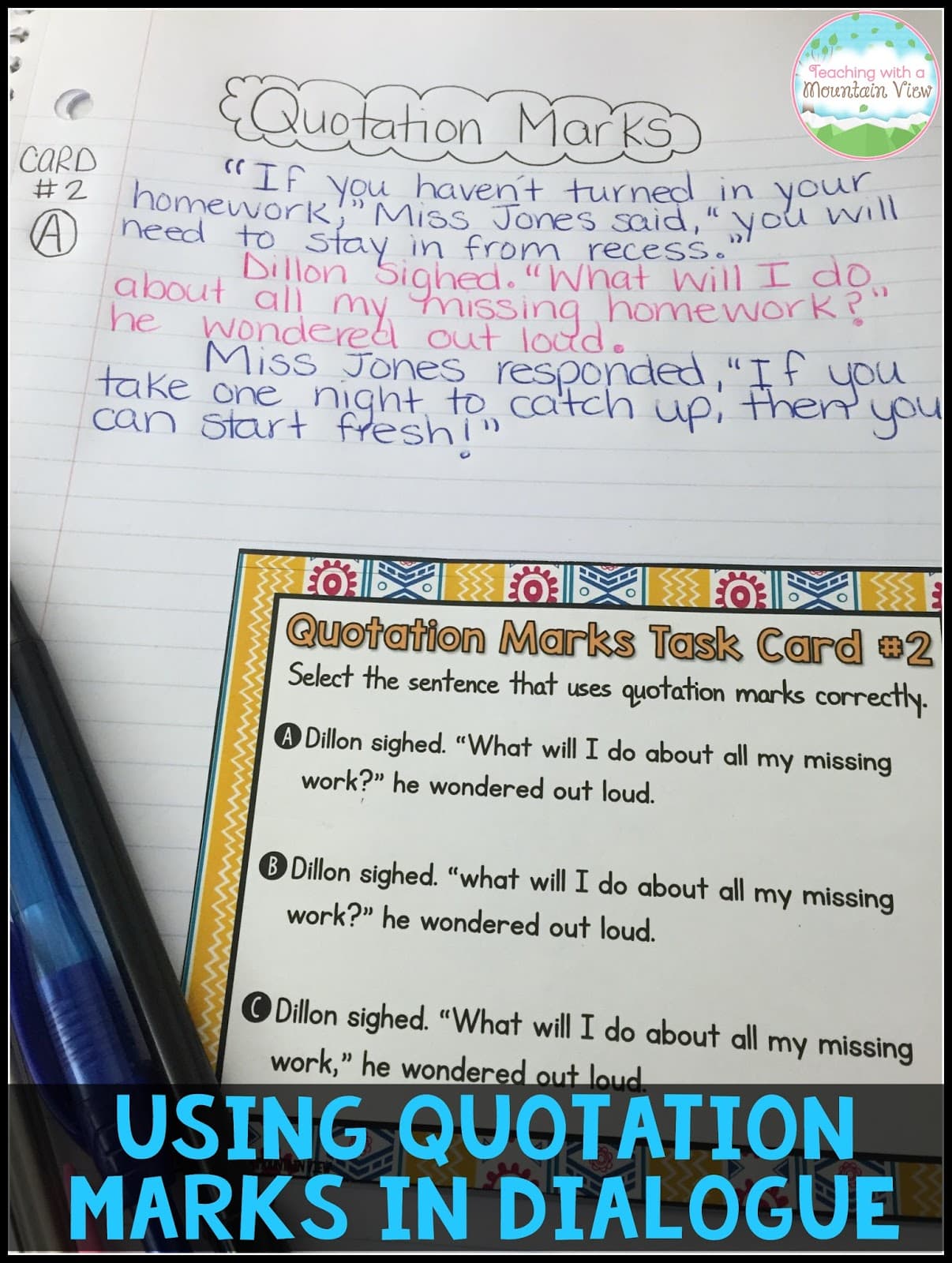What Can Dialogue Tell Us? Inferring Character Traits and Feelings From Dialogue
By Mary Montero
Share This Post:

Typically teaching dialogue to your class might sound a little something like this…“Dialogue is when two or more characters in a text are talking. You will know you are reading dialogue because you will see sets of quotation marks. Now look at the text in front of you, can you point out one piece of dialogue?” Teaching students to recognize when they’re reading dialogue is an important step in comprehension, but we can’t just stop there! There’s a ton of information packed into dialogue, which we can use to help students dig deeper into texts and characters.

{pin image}
The Role of Dialogue
First, students need to understand that dialogue serves many purposes. Conversations within a story portray characters in a more natural way than just reading traditional prose. When an author writes dialogue, he’s giving us a close look at character development by showing emotions and actions. Dialogue gives a character a voice and shows conflict or reactions in a way that is more vivid. Here’s an example.
Prose:
Sam is a very happy student. She is excited for science class today. The teacher said they would be doing something different in class and she could not wait. She had butterflies in her stomach from the excitement.
Dialogue:
I can’t wait for science class today!”, said Sam.
“Why? What is happening in science class?”, her friend Robbie asked.
“Mrs. Barkley said we will be conducting our science experiments today on the water cycle! I can’t wait to see our results. I have never done a science experiment before! I don’t really know what to expect.”
“Wow, that is cool, I have never done an experiment either, I can’t wait to hear all about it on our walk home from school today.” said Robbie.
Sam felt a little flutter in her stomach…”hmm” she thought to herself, “I can’t wait!”
When authors use dialogue like this, it helps paint a more complete picture of the characters and brings the text to life. In the prose example, Sam falls flat. A reader would need to do more work to put themself in the character’s shoes and make connections.
In the dialogue example, students can see themselves in Sam and Robbie’s shoes. The dialogue and descriptions help students tangibly feel the butterflies in their stomachs and make a connection with Sam and Robbie.
Making Inferences From Dialogue
Dialogue is an important aspect of a story, but it’s what we teach our students to do with dialogue that makes it that much more meaningful. When students learn the art of making inferences from dialogue, they will be able to comprehend at a much deeper level. Let’s take a look at our example from above again.
Prose:
Sam is a very happy student. She is excited for science class today. The teacher said they would be doing something very different in class and she could not wait. She had butterflies in her stomach from the excitement.
From this text, students can take away that Sam is happy, excited, and has butterflies in her stomach. Those characteristics and emotions are directly stated in the text, so it doesn’t require higher level thinking to determine how Sam is feeling.
On the other hand with dialogue, students need to use some higher level thinking skills. Let’s look…
Dialogue:
“I can’t wait for science class today!”, said Sam.
“Why? What is happening in science class?”, her friend Robbie asked.
“Mrs. Barkley said we will be conducting our science experiments today on the water cycle! I can’t wait to see our results. I have never done a science experiment before! I don’t really know what to expect.”
“Wow, that is cool, I have never done one either, I can’t wait to hear all about it on our walk home from school today.” said Robbie.
Sam felt a little flutter in her stomach…”hmm” she thought to herself, “I can’t wait!”
What can we infer from Sam based on the text? You can break it down line-by-line with your readers. Typically when someone says “I can’t wait for something” we know that means they are feeling excited or looking forward to something. So we can infer that Sam is excited about science class today.
When Sam says she’s never done a science experiment before and doesn’t know what to expect, most students can relate to those feelings of anticipation. They can infer that she’s not just excited, but possibly a little nervous too.
Near the end, students may be able to connect to a time they have felt a flutter in their own stomachs. Asking them about that time and drawing on their background knowledge is an important step in creating inferences. Some students may not be familiar with the term, so asking others to help build in background knowledge can be helpful too. We can use details from the text to infer that Sam is feeling butterflies because she is eager to experience something new in science class, which deepens students’ understanding and connections to the text.
This inference blog post can also help your students dig deeper into making inferences about characters.
Writing Dialogue
When students are ready to write their own dialogue, this post about teaching quotation marks can help. It also includes a free checklist to make sure students follow dialogue rules.
Mary Montero
I’m so glad you are here. I’m a current gifted and talented teacher in a small town in Colorado, and I’ve been in education since 2009. My passion (other than my family and cookies) is for making teachers’ lives easier and classrooms more engaging.













